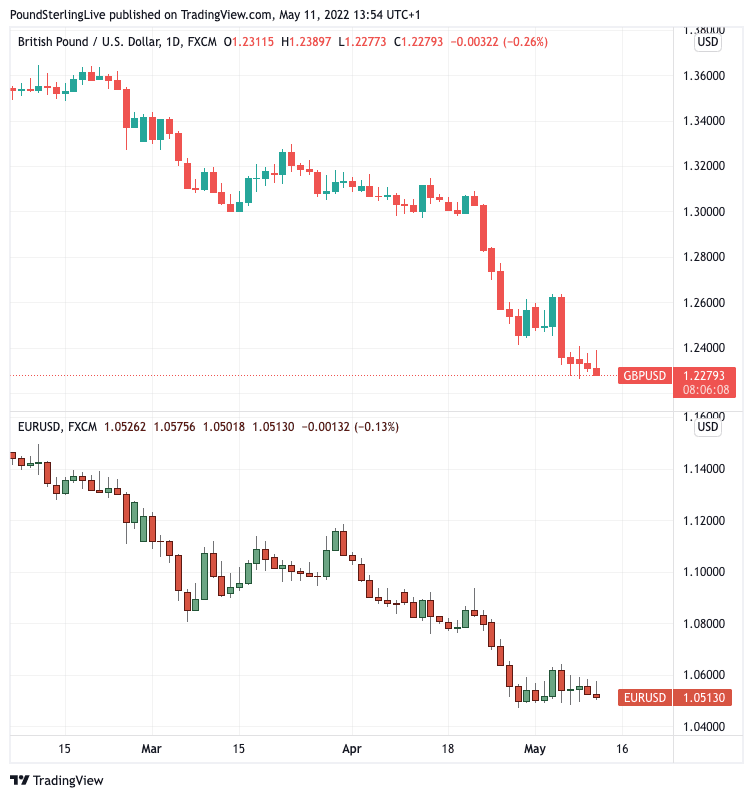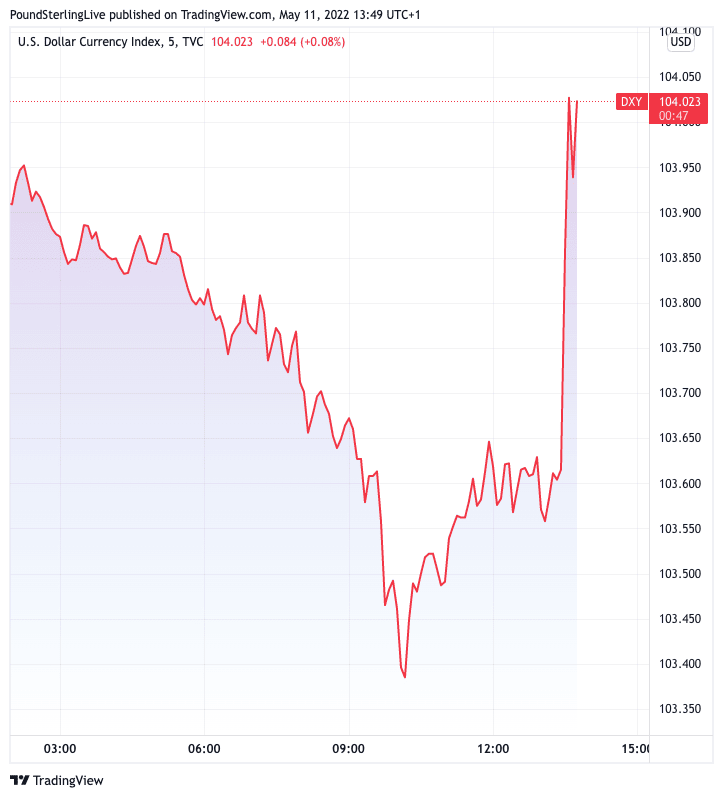Dollar Spikes on U.S. Inflation Surprise
- Written by: Gary Howes

Image © Adobe Images
The Dollar jumped after U.S. inflation figures for April came in stronger than the market was expecting, prompting warnings that it would be some time yet before price increases start to cool.
Headline CPI inflation rose 8.3% year-on-year in April, beating the consensus estimate of 8.1%; nevertheless the figure is lower than May's 8.5%.
But it was that beat on expectation that moved markets and saw a prompt spike in the Dollar as investors bet the Federal Reserve will remain vigilant and press ahead with a series of rate hikes.
Core CPI inflation rose 0.6%, doubling the rate of 0.3% recorded in May, but coming in just above the consensus expectation of 0.2%. "The final print of 0.6% blew economist estimates out of the water," says Simon Harvey, Head of FX Analysis at Monex Europe.
"For context, twelve consecutive 0.6% monthly prints would annualise to a 7.4% gain, well above the Fed’s 2% inflation target," he adds.
The Pound to Dollar exchange rate had been riding high at 1.2405 ahead of the data but was lower at 1.2295 in the minutes following the release.
The Euro to Dollar exchange rate had been as high as 1.0576 earlier in the day but went lower to 1.0525.
Above: The inflation data did little to bolster expectations the USD's rally against GBP and EUR is over.
"The dollar got a fresh boost, with stocks coming under renewed pressure after a new batch of US inflation data," says Alex Kuptsikevich, Senior Market Analyst at FxPro.
"It is far too early to declare victory with inflation likely to remain high for some time to come while energy prices could also rise further if the Ukraine war escalates," says Richard Carter, head of fixed interest research at Quilter Cheviot.
Carter says while it is hoped US inflation has peaked, other countries cannot say the same thing and this has become a global problem.
Ahead of the inflation release money markets were pricing approximately 200 basis points of further rate hikes from the Fed for 2022.
The numbers will at the very least keep this expectation supported.
GBP to USD Transfer Savings Calculator
How much are you sending from pounds to dollars?
Your potential USD savings on this GBP transfer:
$318
By using specialist providers vs high street banks
But fears for global economic growth are growing as a result of the Fed's rapid pace of tightening, which effectively drains liquidity from the U.S. and global economy.
The U.S. economy will inevitably also begin to slow as a combination of slowing global growth and higher financing costs start to bite.
"While the Federal Reserve is now in aggressive tightening mode they may be forced to change tact very quickly as it is very fluid picture right now. As a result, volatility will reign supreme over the coming months," says Carter.
Above: The Dollar spiked on the release of stronger than expected inflation data.
The Dollar index (DXY) surged to a new 20-year high this week on ongoing expectations for rapid Fed tightening and fears of a global economic contraction which tends to benefit the anti-cyclical Dollar.
The index - which is a measure of broader USD strength based on a number of key USD exchange rates - jumped in the wake of the inflation numbers and reaffirms weakness is likely to be viewed as temporary in this environment.
"Price pressures were hotter than expected in the US in April, reinforcing the need for the Fed's front-loaded tightening cycle," says economist Katherine Judge at CIBC Capital Markets.
Driving the price increases were gains in the shelter, food, airline fares, and new vehicles categories.
"Looking beyond April, base effects will help annual inflation continue to decelerate in the near term, but that will be limited by gas prices, which are heading higher again, and supply disruptions resulting from lockdowns in China, in combination with the tightening in the labor market and higher shelter prices," says Judge.






